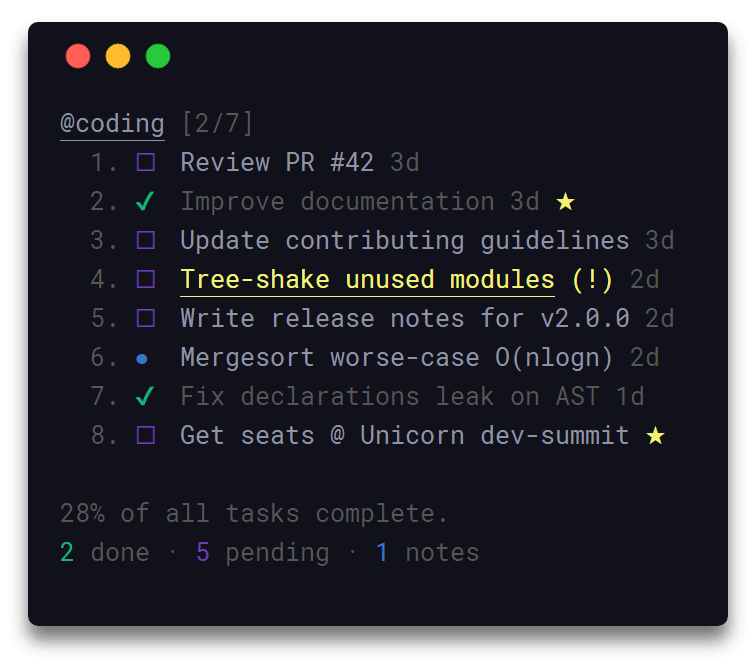Daily Shaarli
10/01/18
How many times have you repeatedly typed out a long command on the command line and wished there was a way to save it for later? This is where Bash aliases come in handy. They allow you to condense long, cryptic commands down to something easy to remember and use. Need some examples to get you started? No problem!
Taskbook is a simple, free, open-source, command line-based utility app for creating and managing notes and tasks across multiple boards.

It uses a minimal syntax and being security conscious, automatically saves all your data to the storage to avoid corruption or sharing with unpermitted parties. By default, the data is stored in JSON file at ~/.taskbook/storage.
I had an email problem. My inbox was always full of emails. I was very slow in responding to personal emails. How slow? Ask my friends. It wasn't unusual for them to receive an email response from me over a year after they sent the email as I played catchup.
I get too much email. Most of us do. The situation was out of control, and had been that way for years. I remember the good old days in the 90's when, for the first few years of my email experience, almost all emails were personal, and a joy to engage in. I wanted that experience back. I wanted receiving someone's email to lighten up my day. I didn't want it to be surrounded by non-personal junk email.
I recently built a small agent-based model using Python and wanted to visualize the model in action. But as much as Python is an ideal tool for scientific computation (numpy, scipy, matplotlib), it's not as good for dynamic visualization (pygame?).
You know what's a very mature and flexible tool for drawing graphics? The DOM! For simple graphics you can use HTML and CSS; for more complicated stuff you can use Canvas, SVG, or WebGL